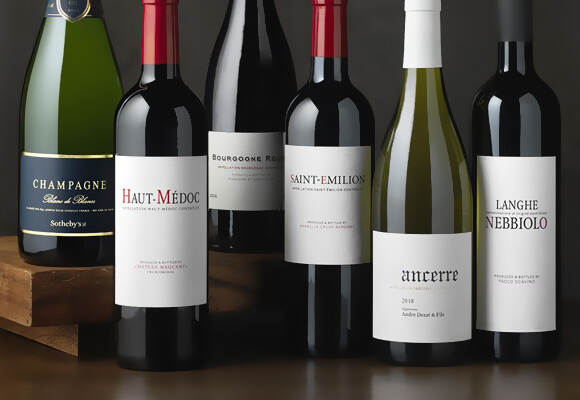Email cannot be empty
Password cannot be empty
Email format error
Email cannot be empty
Email already exists
6-20 characters(letters plus numbers only)
The password is inconsistent
Email format error
Email cannot be empty
Email does not exist
6-20 characters(letters plus numbers only)
The password is inconsistent


Wine Labels: Design, Regulations, and Branding Tips
Wine labels are more than just decorative elements—they’re powerful marketing tools that influence purchasing decisions, convey brand identity, and ensure compliance with industry regulations. Whether you're a winemaker, a startup brand, or a packaging enthusiast, understanding the intricacies of wine label design is crucial for standing out on the shelf.
In this guide, we’ll explore:
✔ Key elements of an effective wine label
✔ Legal requirements and compliance
✔ Design trends that captivate consumers
✔ How to choose the right label manufacturer
Why Wine Labels Matter
A well-designed wine label does more than list alcohol content and origin—it tells a story. Studies show that 70% of consumers decide which wine to buy based on label appeal alone. From minimalist elegance to bold, artistic designs, your label sets the tone for the customer experience.
Essential Components of a Wine Label
-
Brand Name & Logo – The foundation of recognition.
-
Wine Type & Varietal – Clearly state if it’s Cabernet Sauvignon, Chardonnay, etc.
-
Region & Appellation – Required in many countries (e.g., Napa Valley, Bordeaux).
-
Alcohol Content – Mandatory in most markets.
-
Vintage Year – Important for quality perception (if applicable).
-
Bottle Volume – Standard sizes include 750ml, 1.5L (Magnum), etc.
-
Producer & Importer Details – Legal requirement in many regions.
-
Health Warnings – Such as “Contains Sulfites” (U.S. requirement).
Design Trends That Sell More Wine
1. Minimalist & Elegant
Clean typography, neutral colors, and subtle textures appeal to premium buyers.
2. Sustainable & Eco-Friendly Labels
With 68% of consumers preferring eco-conscious brands, recycled paper, soy-based inks, and biodegradable materials are trending.
3. Bold & Artistic
Hand-drawn illustrations, metallic foiling, and textured finishes create shelf appeal.
4. Interactive & Smart Labels
QR codes linking to tasting notes, food pairings, or vineyard stories enhance engagement.
Legal Compliance: What You Need to Know
Wine label regulations vary by country:
-
USA (TTB Compliance) – Requires alcohol %, sulfite disclosure, and health warnings.
-
EU – Mandates allergen info, producer details, and standardized font sizes.
-
Australia & New Zealand – Strict labeling for allergens and geographical indications.
Always consult local guidelines before printing to avoid costly recalls.
Choosing the Right Wine Label Manufacturer
A high-quality label requires:
✔ Durability – Resistant to moisture, condensation, and handling.
✔ Print Quality – Sharp, smudge-proof designs with vibrant colors.
✔ Material Options – From classic paper to waterproof synthetic films.
For brands seeking premium, custom wine labels, working with an experienced manufacturer like Sigapackaging ensures precision printing, compliance expertise, and creative solutions tailored to your brand.
Final Thoughts
Your wine label is a silent salesperson. By combining compelling design, regulatory compliance, and high-quality materials, you can create a label that not only meets industry standards but also captivates buyers.
Need expert guidance on wine label production? Partner with a trusted label manufacturer to bring your vision to life—without compromising on quality or compliance.

